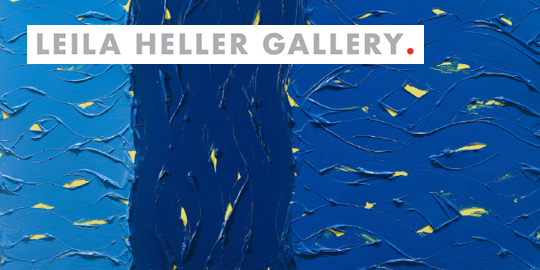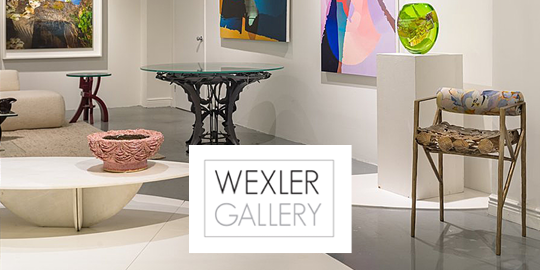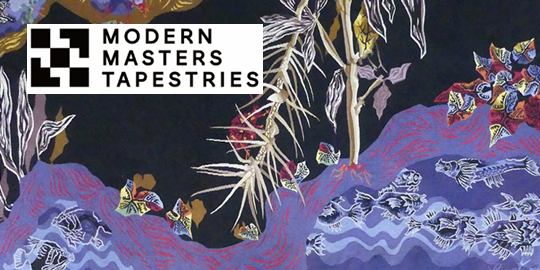Frederick John Mulhaupt
American, 1871 - 1938
Born in Rock Port, Missouri, in 1871, Frederick Mulhaupt apprenticed with a sign painter before studying at the Kansas City School of Design and eventually enrolling at the Art Institute of Chicago in the early 1890s. By 1904, he had established a studio at the Salmagundi Club in New York City and soon after departed for Paris to further his artistic studies. There he was introduced to the techniques of Impressionism still flourishing among both his fellow expatriates and European counterparts, which would later emerge in his own work. During several years abroad, Mulhaupt exhibited at the Paris Salon and explored the St. Ives region of England, where he sketched fishermen hauling their nets with the day’s catch, a theme carried over in his paintings of the wharves and sailors of Gloucester, Massachusetts, for which he is today best known.
Upon his return to America, Mulhaupt settled again in New York while spending the warmer summer months in Gloucester beginning in 1907. In the early decades of the 20th century, Massachusetts’ Cape Ann was a magnet for artists seeking relief from the hot cities of Boston, New York, Chicago and beyond. The quaint New England villages had been attracting marine painters since the 1850s, but it was during the early 20th century that the Cape Ann School emerged, with Mulhaupt as its dean. In Gloucester, he discovered the town that he decreed “duplicates any views I care to paint.” By 1922, he settled there permanently, working from his studio on Rocky Neck and eventually founding the North Shore Arts Association. Although he preferred to paint alone, Mulhaupt was remembered as a gifted teacher who encouraged his students to discover their own style. Fellow artist Emile Gruppe believed that “Mulhaupt got the smell of Gloucester on canvas. He captured the mood of the place – and that’s worth all the good drawing of a hundred lesser painters.”
While recognized for his paintings of the working harbors of Cape Ann, Mulhaupt applied his talents to rural settings as well, encountering worthy subjects in the forest interiors, historic stone bridges and changing seasons of his adopted New England. February Morning, possibly painted in New Hampshire, is an ideal example of his landscape work in which he captures the warm pinks and cool blues of sunlight and shadow on snow and uses his characteristic earthy palette to unify the composition.
Working in oil, watercolor and pastel, Mulhaupt exhibited frequently at major venues including the National Academy of Design, the Art Institute of Chicago, the Pennsylvania Academy of the Fine Arts, and the Corcoran Gallery of Art. Highly regarded, he was often the recipient of exhibition prizes, including awards at the Allied Artists of America, the National Arts Club, and the Philadelphia World’s Fair in 1926. That same year Mulhaupt was elected an associate member of the National Academy of Design.
Upon his return to America, Mulhaupt settled again in New York while spending the warmer summer months in Gloucester beginning in 1907. In the early decades of the 20th century, Massachusetts’ Cape Ann was a magnet for artists seeking relief from the hot cities of Boston, New York, Chicago and beyond. The quaint New England villages had been attracting marine painters since the 1850s, but it was during the early 20th century that the Cape Ann School emerged, with Mulhaupt as its dean. In Gloucester, he discovered the town that he decreed “duplicates any views I care to paint.” By 1922, he settled there permanently, working from his studio on Rocky Neck and eventually founding the North Shore Arts Association. Although he preferred to paint alone, Mulhaupt was remembered as a gifted teacher who encouraged his students to discover their own style. Fellow artist Emile Gruppe believed that “Mulhaupt got the smell of Gloucester on canvas. He captured the mood of the place – and that’s worth all the good drawing of a hundred lesser painters.”
While recognized for his paintings of the working harbors of Cape Ann, Mulhaupt applied his talents to rural settings as well, encountering worthy subjects in the forest interiors, historic stone bridges and changing seasons of his adopted New England. February Morning, possibly painted in New Hampshire, is an ideal example of his landscape work in which he captures the warm pinks and cool blues of sunlight and shadow on snow and uses his characteristic earthy palette to unify the composition.
Working in oil, watercolor and pastel, Mulhaupt exhibited frequently at major venues including the National Academy of Design, the Art Institute of Chicago, the Pennsylvania Academy of the Fine Arts, and the Corcoran Gallery of Art. Highly regarded, he was often the recipient of exhibition prizes, including awards at the Allied Artists of America, the National Arts Club, and the Philadelphia World’s Fair in 1926. That same year Mulhaupt was elected an associate member of the National Academy of Design.
Mulhaupt was known as the “Dean of the Cape Ann School” because of his extraordinary ability to capture the experience and atmosphere of harbor activity in Gloucester, Massachusetts. The artist was particularly acclaimed for busy maritime scenes, which won him wide patronage and critical acclaim. He spent considerable time drawing outdoors, and his large paintings were clever reconstructions of scenes based upon these sketches. A fellow Cape Ann painter, Emile Gruppé, aptly characterized Mulhaupt’s style and special relationship with Gloucester when he wrote:
"There were painters in Gloucester in the old days who were more exact than he was—more "authentic" in that they got the shape of each boat exactly right. But many of these painters, as you looked at their work, might just as well have been painting a scene in England or Norway. Mulhaupt got the smell of Gloucester on canvas. He captured the mood of the place—and that's worth all the good drawing of a hundred lesser painters."
Mulhaupt grew up in Kansas, and like other artists he made the pilgrimage east to study and work in Chicago, and then New York. He first visited Cape Ann in about 1907, and spent many summers there before moving permanently in 1922. His second Cape Ann studio, purchased in 1932, was a former blacksmith’s shop in Rocky Neck that sat on pilings in the harbor. This setting provided a unique vantage point, apparently so compelling to the artist that he painted there year round despite the lack of running water during the winter months.
The artist’s works are in a number of prestigious public and private collections, including the National Academy of Design, New York; the Fogg Art Museum, Harvard University, Cambridge, Massachusetts; the Reading Public Museum, Reading, Pennsylvania; the Cummer Museum of Art, Jacksonville, Florida; the Indianapolis Museum of Art, Indiana; and the University of Michigan Museum of Art, Ann Arbor, Michigan, among others.
"There were painters in Gloucester in the old days who were more exact than he was—more "authentic" in that they got the shape of each boat exactly right. But many of these painters, as you looked at their work, might just as well have been painting a scene in England or Norway. Mulhaupt got the smell of Gloucester on canvas. He captured the mood of the place—and that's worth all the good drawing of a hundred lesser painters."
Mulhaupt grew up in Kansas, and like other artists he made the pilgrimage east to study and work in Chicago, and then New York. He first visited Cape Ann in about 1907, and spent many summers there before moving permanently in 1922. His second Cape Ann studio, purchased in 1932, was a former blacksmith’s shop in Rocky Neck that sat on pilings in the harbor. This setting provided a unique vantage point, apparently so compelling to the artist that he painted there year round despite the lack of running water during the winter months.
The artist’s works are in a number of prestigious public and private collections, including the National Academy of Design, New York; the Fogg Art Museum, Harvard University, Cambridge, Massachusetts; the Reading Public Museum, Reading, Pennsylvania; the Cummer Museum of Art, Jacksonville, Florida; the Indianapolis Museum of Art, Indiana; and the University of Michigan Museum of Art, Ann Arbor, Michigan, among others.
As the "Dean of the Cape Ann School," Frederick Mulhaupt was widely celebrated for his vibrant harbor scenes. Cape Ann, Massachusetts, a picturesque seaport north of Boston, has long been an artistic haven. Literally steeped in history, Gloucester, Essex, and Rockport have sparked successful industries in overseas trade, fishing, shipbuilding, and rock quarrying for over three centuries. In the nineteenth century, Winslow Homer recorded the activity of the area's sailing and fishing industries, while Fitz Hugh Lane transfigured its harbors into a vision of transcendental calm; in the twentieth, Marsden Hartley responded to the primeval pull of Dogtown
To this tradition must be added Mulhaupt, who painted Cape Ann's docks, wharfs, boats, and workmen in a vivid Impressionist style. Born in another Rockport-Rock Port, Missouri-Mulhaupt trained at the Art Institute of Chicago and sought further study in France. He spent several years in Paris, absorbing the work of the Impressionists and exhibiting at the Paris Salon, before being called to Cape Ann. Mulhaupt first arrived in Cape Ann in 1907 and returned to the region each year.
Winter was Mulhaupt's favorite season to put to canvas, and he became known as an artist capable of bringing out the color of winter. His chilly scenes register chromatic subtleties in the manner of light refracted through a prism; white tones are separated out into hundreds of individual colors. This interest in light is visible in all of his work, in which he portrayed Gloucester under the guise of different seasons and climatic conditions. Like the best Impressionists, Mulhaupt found one location that afforded a variety of ephemeral atmospheric effects; Gloucester became his Giverny. The lure of the region drew him ever closer, and the devoted visitor became a year-round resident in 1923.
Mulhaupt was a member of the National Academy of Design and helped to found the Palette and Chisel Club, the Allied Artists of America, and the North Shore Arts Association. He won prizes from the Salmagundi Club, the Allied Artists American Union, the Connecticut Academy of Fine Arts, and the Ogunquit Art Club. His work is in the Cummer Museum of Art and Gardens, the Albuquerque Museum, the Reading Public Museum, the Cape Ann Historical Museum, and the North Shore Arts Association Museum.
Biography courtesy of Questroyal Fine Art, LLC, www.antiquesandfineart.com/questroyal
To this tradition must be added Mulhaupt, who painted Cape Ann's docks, wharfs, boats, and workmen in a vivid Impressionist style. Born in another Rockport-Rock Port, Missouri-Mulhaupt trained at the Art Institute of Chicago and sought further study in France. He spent several years in Paris, absorbing the work of the Impressionists and exhibiting at the Paris Salon, before being called to Cape Ann. Mulhaupt first arrived in Cape Ann in 1907 and returned to the region each year.
Winter was Mulhaupt's favorite season to put to canvas, and he became known as an artist capable of bringing out the color of winter. His chilly scenes register chromatic subtleties in the manner of light refracted through a prism; white tones are separated out into hundreds of individual colors. This interest in light is visible in all of his work, in which he portrayed Gloucester under the guise of different seasons and climatic conditions. Like the best Impressionists, Mulhaupt found one location that afforded a variety of ephemeral atmospheric effects; Gloucester became his Giverny. The lure of the region drew him ever closer, and the devoted visitor became a year-round resident in 1923.
Mulhaupt was a member of the National Academy of Design and helped to found the Palette and Chisel Club, the Allied Artists of America, and the North Shore Arts Association. He won prizes from the Salmagundi Club, the Allied Artists American Union, the Connecticut Academy of Fine Arts, and the Ogunquit Art Club. His work is in the Cummer Museum of Art and Gardens, the Albuquerque Museum, the Reading Public Museum, the Cape Ann Historical Museum, and the North Shore Arts Association Museum.
Biography courtesy of Questroyal Fine Art, LLC, www.antiquesandfineart.com/questroyal

















